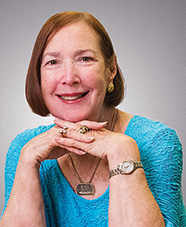
We usually trace the first Thanksgiving to a three-day festival in 1621, though the Pilgrims likely never used the word "Thanksgiving." The feast followed the Pilgrims' arduous, 66-day journey from England to Plymouth, Massachusetts. Suffering through a harsh winter, about half of the colonists died from scurvy and contagious diseases.
Early on they interacted with a Native American man named Squanto, who taught them how to cultivate corn, extract sap from maple trees, and catch fish in the rivers. Through Squanto, the Pilgrims forged an alliance with the local Wampanoag tribe. Different chroniclers wrote that Plymouth Colony governor William Bradford sent four men to get wild ducks, geese, turkey, and rabbits for the Thanksgiving feast, and the Wampanoag guests brought five deer. They also competed in games throughout the celebration. (This was really the only period of peace and harmony between the American Indians and the colonists.)
According to Plymouth plantation records, the feast probably included broiled lobster, Indian cornmeal, cod, stewed pumpkin, and roasted venison with mustard sauce. Historians believe many of the dishes were likely prepared using traditional Native American spices. And since the Pilgrims had no ovens and very little sugar, they didn't have the desserts that we enjoy today.
Feasting at harvest time is an ancient tradition, tracing back to the Egyptians, Greeks, and Romans. Jews celebrate the holiday of Sukkot, and Native Americans themselves had a tradition of feasting during the harvest. During the early colonial period, Thanksgiving days were celebrated by different colonies and states, though nobody used the same date.
To express thanks for the end of the Revolutionary War and the new Constitution of the United States, George Washington issued a national Thanksgiving proclamation in 1789. During the nineteenth century, author Sarah Josepha Hale launched a decades-long letter writing campaign to make Thanksgiving a national holiday. In 1863, Abraham Lincoln issued a proclamation to "heal the wounds" of a country reeling from the Civil War, and he declared a day of observation in late November. To jumpstart Christmas shopping, Franklin Roosevelt moved Thanksgiving up on the calendar. But his plan was chastised—people called it "Franksgiving"—and he officially made it the fourth Thursday of November.
I don't know how turkey became the preeminent Thanksgiving food. People eat a lot of chicken and fish, but most people don't eat turkey that often. But turkey would have been plentiful—you could go out and shoot one—and you could feed a lot of people with a 20-pound bird. That's probably why stuffing became popular, too. Poor families needed foods they could stretch to feed 10 kids. You're going to fill up pretty quickly on turkey, stuffing, corn, and mashed potatoes.